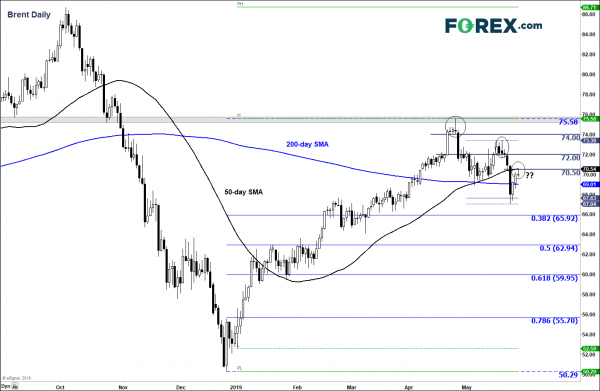Crude oil prices have been quite volatile of late, owing to a simultaneous rise in supply-side risks and investor concerns over demand. Oil exports have fallen in Iran because of the US sanctions while outages in Venezuela, and elsewhere, have further reduced supply. However, oil shipments from Russia are recovering after contamination affected Druzhba pipeline. This should ease supply concerns slightly, potentially leading to weakness in prices – everything else being equal. With the US supply still plentiful, the market is unlikely to remain tight for too long in any case. Meanwhile on the demand side, incoming data from major oil consumer nations have been poor, suggesting soft demand including for oil. On top of this, we have seen renewed falls in emerging market currencies – most notably in the Chinese yuan – making dollar-priced crude oil dearer to purchase in those nations. So, the fundamental backdrop may be conflicting, but overall it is not a healthy one. Thus, crude prices could fall back over time.
In fact, oil prices may have already peaked, and we may have seen the start of a new downward trend, judging by the behaviour of price action over the past month or so. Brent, for example, has printed a couple of lower highs and lower lows after topping out at just north of $75.50 on 25th April. On Thursday of last week, it came under renewed selling pressure, before bouncing back on Friday and a little further on Monday. It was up earlier today as well, before turning flat at the time of writing. It looks like Brent is finding stiff resistance from its 50-day moving average, which had previously offered moving support. The broken support at $70.50, which happens to tie in with the 50-day MA, is providing additional resistance. If we see the formation of another bearish-looking daily candle here, like the ones circled on the chart, below, then this could trigger fresh technical selling in the days ahead. As things stand, oil’s path of least resistance is clearly to the downside, but that could change if and when it forms a higher high or creates a reversal pattern at lower levels first.


 Signal2forex.com - Best Forex robots and signals
Signal2forex.com - Best Forex robots and signals




